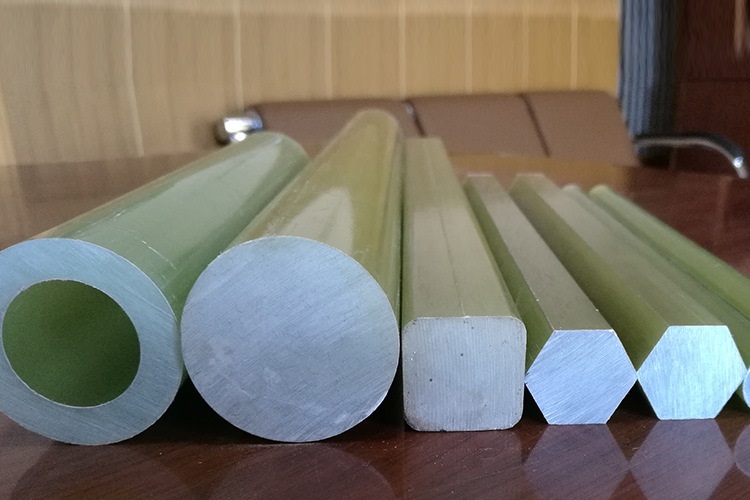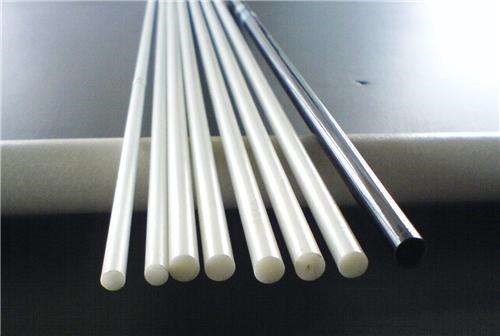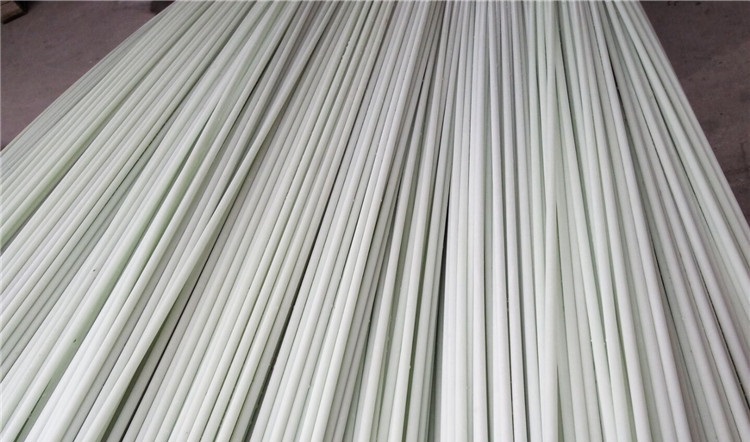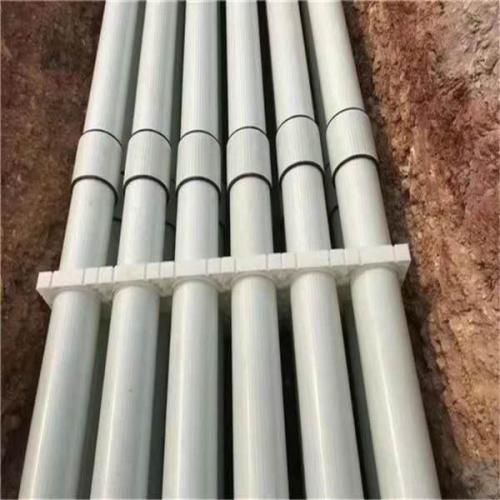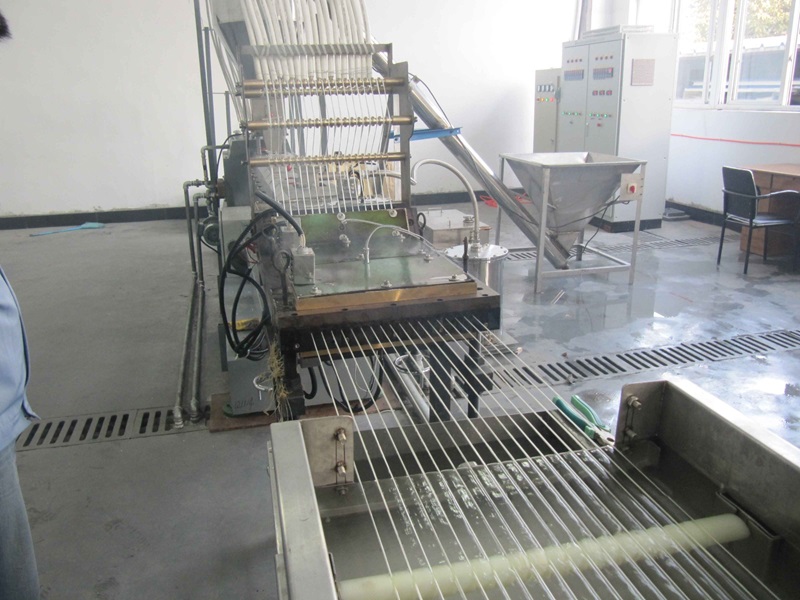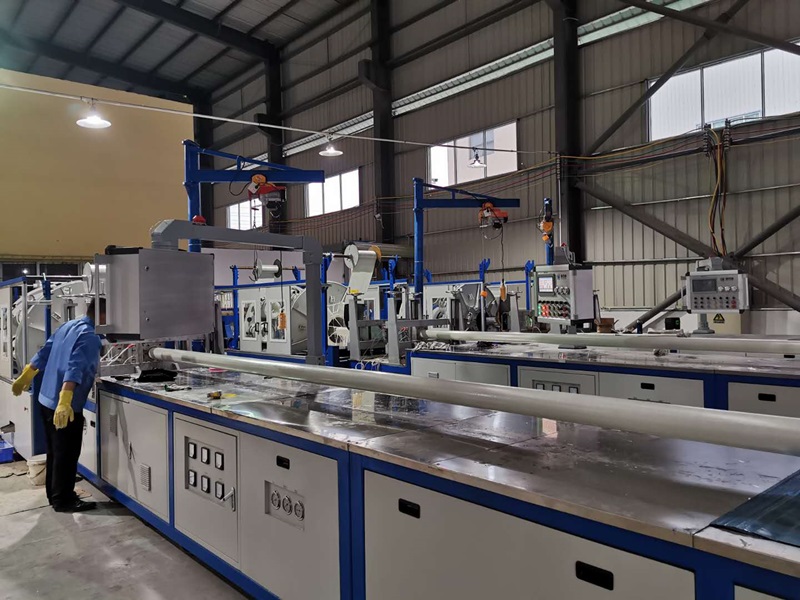As technology develops, many industries require specific components with properties unmatched by traditional materials (e.g. steel, aluminum, wood). Many vertical industries require options that are both durable and lightweight to meet the unique requirements of rapid development.
Pultruded fiberglass has been used in various industries for many years. Today, it is an integral part of the global manufacturing economy and the material of choice in vertical industries such as construction and utilities.
In this article, we take a look at the unique properties, wide range of applications, and many benefits of pultruded fiberglass rods:
What is Pultruded Fiberglass Rod?
Pultruded fiberglass rods are made from a composite material consisting of polyester resin and fiberglass. Their unique characteristics make them suitable for a wide range of applications in various industries, such as manufacturing, construction, utilities, motor vehicles, and telecommunications.
The pultrusion process allows rods to be formed into almost any shape and can be customized to meet the needs of different applications. Some common stock shapes include solid rod, tube, bar stock, oval solid, channel, semicircle, and tee.
The composite matrix determines the properties of pultruded glass fiber rods, which is achieved by varying the resin system and glass content properties. Conductor bars are made by co-pultruding glass fiber-reinforced resin with copper wire.
Therefore, fiberglass rods can be manufactured to meet a wide range of requirements for specific designs and applications. They can be easily machined, butted, notched, chamfered, rounded, and pointed using simple tools.
In addition, the composition of these rods can be varied to provide ultra-high strength, withstand different temperature ranges, or provide flame-retardant, tracking, and corrosion-resistant properties.
What is the Pultrusion Process?
The manufacturing process uses a pull method rather than the push method used in the extrusion process to convert reinforcing fibers and liquid resin into fiber-reinforced plastic.
The first step in the pultrusion process is to saturate the fibers by pulling them through a resin infiltrator containing a bath made of epoxy, polyurethane, polyester, and/or vinyl ester.
Often, fillers and additives such as colorants, flame retardants, and UV blockers are mixed into the bath to enhance the finished product.
Next, the saturated fiber goes into a “preform” tool that squeezes out excess resin and shapes the fiber reinforcement. The composite is then pulled through a heated steel mold, which cures the thermosetting resin to form a cured polymer with the desired shape and dimensions.
Finally, the hardened polymer is pulled towards the cutting blade so it can be cut to the desired length. Urethane pull blocks prevent the finished product from cracking, twisting, and warping during the process.
Compared to extrusion, pultruded materials exhibit higher tensile strength because the reinforcing fibers are continuous in length — making them both light and strong.
Common Applications of Pultruded Fiberglass Rods
Due to their flexibility in shape, size, and performance, pultruded fiberglass rods have a wide range of applications in the electrical, utilities, consumer goods, sporting goods, construction, infrastructure, and telecommunications industries.
For example, it is used by:
♣ The construction industry manufactures items such as window, door, or frame profiles and reinforcements, plumbing and electrical brackets, and shutter panels.
♣ Utility suppliers for projects, including utility poles, cross arms and line markers, wire and trunking, waste and water treatment components, non-conductive elevator tracks, and fiber optic cables.
♣ Infrastructure and civil engineering projects include bridge components, corrosion-resistant barriers, antenna enclosures, railway cross arms, and road noise barriers.
♣ Additionally, pultruded fiberglass rods are used in many other vertical industries and are used in the manufacture of plant stakes, transformer spacers, isolation bars, cable support bars, corrosion-resistant equipment, food processing machinery, tents, flag poles, curtains, parapet wall pins, advertising boards, antennas, etc.
Advantages of Using Pultruded Fiberglass Rods
Pultruded fiberglass rods are easy to work with due to the flexibility of the resin mix. Their non-reactivity also makes them more durable and safer than many other materials:
Unlike wood or lumber, pultruded fiberglass rods will not rot, mold, or warp and will not be affected by mold or insect infestation. They are lighter, stronger, easier to use, and stronger. They require no additional weather protection (for example, expensive coatings, preservatives, or films), low maintenance costs, and a longer life cycle.
Compared to steel, pultruded fiberglass rods conduct neither heat nor electricity, are resistant to corrosion, and can be up to 75 percent lighter without sacrificing strength. This provides long-term cost savings by reducing the long-term expenses associated with replacing corroded and oxidizing materials due to weather, moisture, and chemical exposure.
Unlike aluminum, pultruded fiberglass rods are lightweight, nonconductive, and highly corrosion-resistant. They are also shock resistant, offer greater dimensional stability, and do not interfere with radio wave and EMI/RFI transmissions, making them an excellent solution for many types of radio, radar, and antenna applications.
Fiberglass rebar, on the other hand, requires very little maintenance to maintain its microstructural integrity and mechanical properties for more than 15 years. This results in significantly lower life-cycle costs while enhancing the durability and long-term performance of the structure.
In addition, pultruded fiberglass rods can be fabricated using simple tools without the need for welders. Inexpensive and easy to transport, they allow designers, builders, and manufacturers to respond to rapidly changing market demands with ease and flexibility.
Pultruded fiberglass rods are also easy to install and do not require expensive special equipment, making them an ideal material for specific vertical components that require strength and lightness, such as motor vehicles, rail and aerospace.
Last but not least, the long service life and simple maintenance requirements of pultruded fiberglass rods translate into low energy consumption over the product lifecycle, helping to achieve sustainability goals that are highly valued by many industries.
The use of pultruded fiberglass rods enables the rapid and economical manufacture of strong, durable, lightweight structural components in high volumes while maintaining low maintenance costs.
Not to mention, the virtually limitless customization options mean that these materials are highly adaptable and can be used to meet the rapidly evolving needs of many industries and technologies without adding prohibitive costs.
Using TechnoFRP’s profile pultrusion machine can easily produce pultruded fiberglass rods. Contact us now!
Post time: Dec-26-2022





